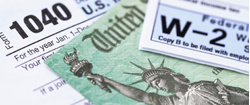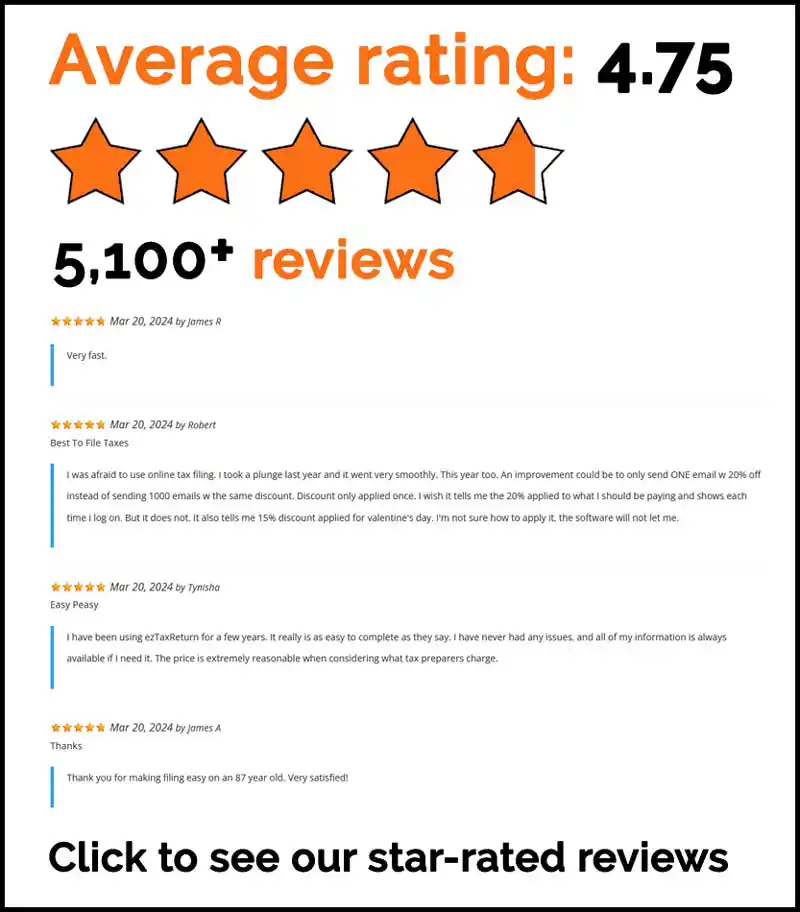The information in this article is up to date for tax year 2025 (returns filed in 2026).
Looking to save money on your taxes? This article offers seven expert tax tips to help you cut your tax bill. You’ll learn how to maximize retirement contributions, leverage tax credits, and more.
Key Takeaways
- Maximize retirement contributions to lower your taxable income and secure your financial future with significant tax benefits!
- Utilize Health Savings Accounts (HSAs) for a triple tax advantage: deductible contributions, tax-free growth, and tax-free withdrawals for medical costs!
- Leverage tax credits like the Child Tax Credit and Earned Income Tax Credit to reduce your tax bill dollar-for-dollar, putting more money in your pocket!
Maximize Your Retirement Contributions
When it comes to tax savings, one of the most effective strategies is to maximize your retirement contributions. Not only does this help secure your financial future, but it also offers significant tax benefits. Contributing to retirement accounts like a 401(k) or a traditional IRA lowers your taxable income and reduces your tax bill.
In 2025, the maximum contribution to a 401(k) or 403(b) plan is $23,500, with individuals aged 50 and over eligible for an additional $7,500 in catch-up contributions. Similarly, the annual traditional IRA contribution limit has risen to $7,000. These contributions are deductible, meaning they reduce the amount of your total income that is subject to tax. This is especially beneficial for married couples who can double their contributions.
Moreover, many employers offer matching contributions to 401(k) plans, which is essentially free money for your retirement savings. Taking full advantage of these opportunities significantly lowers your taxable income and boosts your retirement savings.
Utilize Health Savings Accounts (HSAs)
Health Savings Account (HSA) is another powerful tool for tax savings. These accounts offer a triple tax advantage: tax-deductible contributions, tax-free growth, and tax-free withdrawals for qualified medical expenses. Contributing to a health savings account lowers your tax bill while saving for future healthcare costs.
For 2025, the maximum contribution for an individual is $4,300, while families can contribute up to $8,550. At age 55, you can contribute an additional $1,000. Contributions to an HSA are made with pre-tax dollars, which means they reduce your taxable income. Additionally, employer contributions to HSAs are not counted as taxable income, further lowering your overall tax burden.
The funds in your HSA grow tax-free, and as long as you use them for qualified medical expenses, withdrawals are also tax-free. This makes HSAs an excellent way to manage healthcare costs and maximize your tax savings. Plus, unlike Flexible Spending Accounts (FSAs), HSA funds roll over year after year, allowing you to build a substantial nest egg for future medical expenses.
Leverage Tax Credits
Tax credits are a game-changer when it comes to lower your tax bill. Unlike deductions, which reduce your taxable income, tax credits reduce the amount of tax you owe dollar-for-dollar. This means that a $1,000 tax credit saves you $1,000 in taxes, making them incredibly valuable.
Several tax credits are available to taxpayers, including the Child Tax Credit, Earned Income Tax Credit (EITC), and education-related credits. The Child Tax Credit, for instance, provides up to $2,000 per qualifying child under the age of 17. The EITC is designed to help low-income taxpayers and can provide up to $8,046 for those with three or more qualifying children in 2025.
Education-related tax credits like the American Opportunity Tax Credit and the Lifetime Learning Credit can also significantly reduce your tax liability. The American Opportunity Tax Credit offers a maximum of $2,500 per eligible student, while the Lifetime Learning Credit provides up to $2,000 per tax return. Leveraging these credits reduces your federal income tax, leaving more money in your pocket.
Implement Tax-Loss Harvesting
If you have investments, tax-loss harvesting is a strategy you should consider. This involves selling underperforming assets to offset capital gains, thereby minimizing your tax liability. Strategically selling investments that have lost value cancels out gains from other investments, lowering your income tax.
For instance, if you have $10,000 in capital gains but also have investments that have lost $10,000, selling those underperforming assets can offset the gains, resulting in no capital gains tax. If your capital losses exceed your capital gains, you can deduct up to $3,000 of excess losses from your other income. Any remaining losses can be carried forward to future tax years.
However, it’s important to be aware of the IRS wash sale rules. These rules prevent you from claiming a tax deduction on a security sold at a loss if you purchase a substantially identical security within 30 days before or after the sale. Carefully planning your investment strategy allows you to utilize tax-loss harvesting to significantly reduce your tax burden.
Optimize Charitable Contributions
Charitable contributions are not only a great way to give back to your community but also a smart strategy for tax savings. Donations to qualified charities can be deducted on Schedule A of Form 1040 if you itemize your deductions. Donations must be made before December 31 of the tax year to qualify for a deduction.
When you itemize your deductions, you can lower your taxable income by the amount of your charitable contributions. This can lead to substantial tax savings, especially if you make significant donations throughout the year. Keep in mind that it’s essential to keep records and receipts of your donations to substantiate your claims during tax filing.
Additionally, consider donating appreciated assets such as stocks instead of cash. This allows you to avoid capital gains taxes on the appreciation while still receiving a deduction for the full market value of the donation. Optimizing your charitable contributions lowers your tax bill while supporting meaningful causes.
Monitor Flexible Spending Accounts (FSAs)
Flexible Spending Accounts (FSAs) are another effective way to save on taxes. These accounts allow you to set aside pre-tax earnings to cover eligible medical expenses, reducing your taxable income in the process. However, it’s crucial to monitor your FSA balance regularly to ensure you use the funds within the plan year due to the ‘use-it-or-lose-it’ rule.
FSAs cover a variety of healthcare costs, including copayments, deductibles, and certain over-the-counter items. The funds in your FSA are available at the start of the plan year, even if you haven’t fully deducted the contributions from your paycheck. This gives you immediate access to the total FSA balance for any eligible expenses you might incur.
Maximize the benefits of your FSA by tracking eligible expenses and using funds before the plan year ends. Some plans offer a grace period or allow you to carry over a limited amount of unused funds to the next year, so be sure to understand the specific rules of your FSA. Monitoring and effectively using your FSA helps save on taxes and manage medical expenses more efficiently.
Plan for Future Tax Changes
Staying informed about future tax changes is essential for effective tax planning. The IRS makes annual adjustments to over 60 tax provisions to counteract inflation, which can affect your tax bracket and liabilities. Paying taxes while keeping an eye on these changes allows you to adjust your tax strategies and minimize your tax burden.
Summary
In summary, taking proactive steps to manage your taxes can lead to significant savings. By maximizing your retirement contributions, utilizing Health Savings Accounts, leveraging tax credits, and implementing tax-loss harvesting, you can lower your taxable income and reduce your tax bill. Optimizing charitable contributions and monitoring Flexible Spending Accounts further enhance your tax-saving strategies.
Remember, every dollar saved on taxes is a dollar that can be invested in your financial future. Start implementing these tax tips today and watch your savings grow!
Frequently Asked Questions
How can I get a bigger tax refund?
You can supercharge your tax refund by rethinking your filing status, maximizing your contributions to IRAs and HSAs, and tapping into all available tax deductions and credits! Get savvy about timing and take advantage of the benefits to see that refund grow!
What is the maximum contribution limit for 401(k) plans in 2025?
You’ll be thrilled to know that in 2024, the maximum contribution limit for 401(k) plans is $23,500, plus a fantastic additional $7,500 for those aged 50 and over! It’s an amazing opportunity to boost your retirement savings!
How do Health Savings Accounts (HSAs) provide tax benefits?
HSAs are fantastic because they give you a triple tax benefit! You get to make tax-deductible contributions, watch your savings grow tax-free, and enjoy tax-free withdrawals when you need them for medical expenses!
What is the difference between tax credits and deductions?
Tax credits are amazing because they reduce your tax bill dollar-for-dollar, while deductions only lower your taxable income! So, if you want to save more on taxes, focus on those awesome credits!
How does tax-loss harvesting work?
Tax-loss harvesting is an amazing strategy that allows you to sell losing investments to offset your capital gains and reduce your tax bill! Plus, if your losses are greater than your gains, you can deduct up to $3,000 from other income and carry forward any remaining losses—what a great way to boost your tax efficiency!
Ready to put these tax-saving tips into action? Don’t wait—file your taxes quickly and easily with ezTaxReturn today! With simple, step-by-step guidance, ezTaxReturn helps you maximize your deductions and credits so you can keep more of your hard-earned money. Start now and make tax season stress-free!”
The articles and content published on this blog are provided for informational purposes only. The information presented is not intended to be, and should not be taken as, legal, financial, or professional advice. Readers are advised to seek appropriate professional guidance and conduct their own due diligence before making any decisions based on the information provided.




